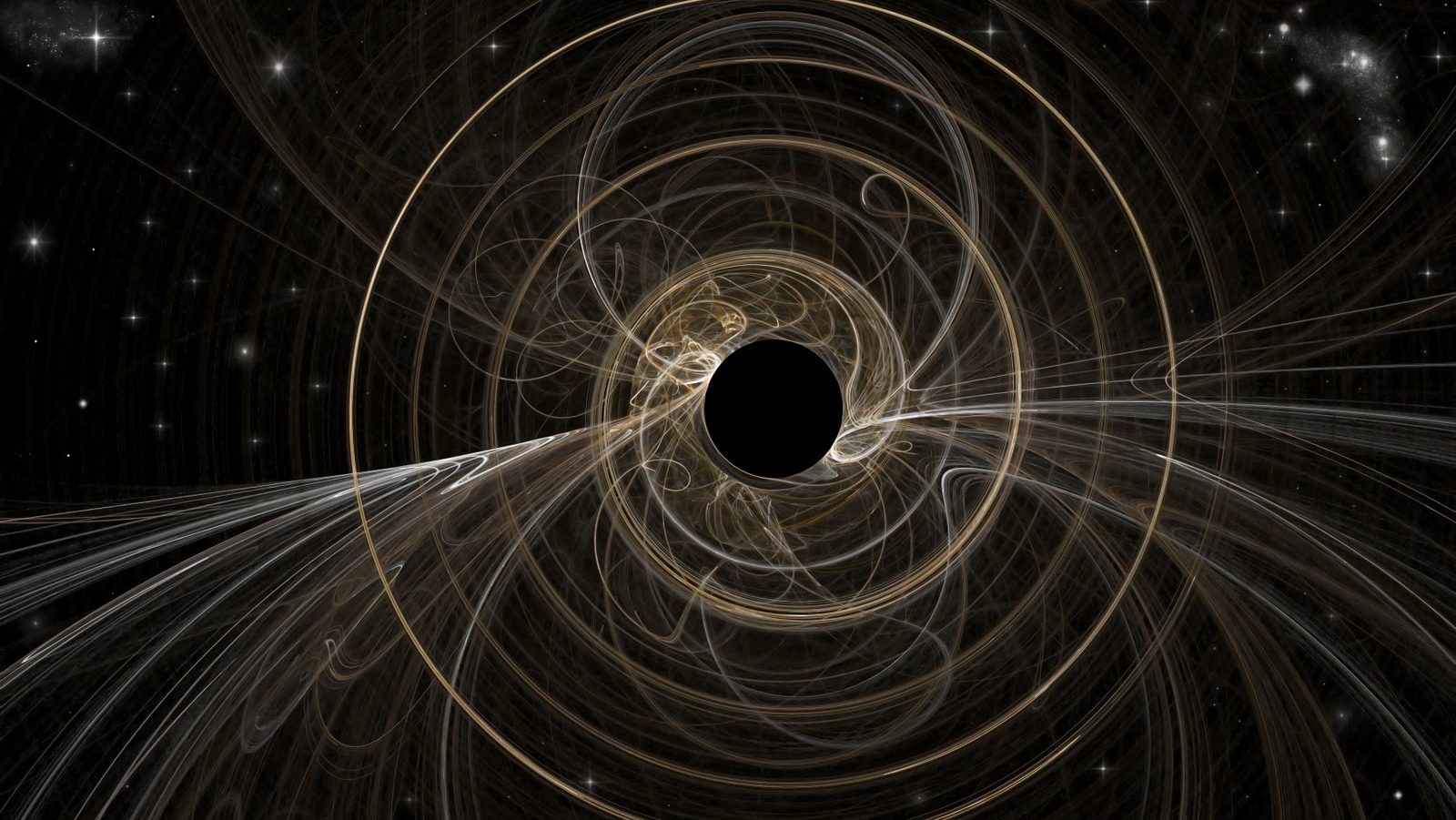Gravitational Waves: from discovery of the year to science of the century
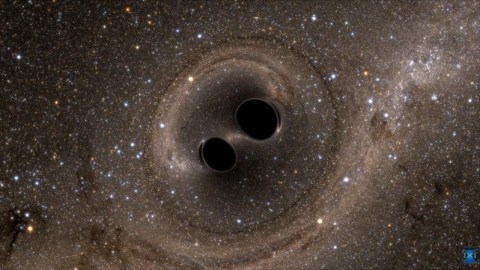
LIGO’s world-changing announcement was the beginning. The best is what comes next.
“It’s the first time the universe has spoken to us through gravitational waves, up to now we’ve been deaf to them.” –Dave Reitze
Of all the scientific discoveries and advances that 2016 saw, none looms larger than the first direct detection of gravitational waves. When Einstein first laid out his theory of General Relativity in 1915, it changed the way we viewed gravitation forever. Rather than two masses attracting each other through an invisible, distant force, matter and energy itself existed within spacetime. Their presence determined the curvature of spacetime, and the curvature of spacetime determined how matter and energy experienced gravity. Less than a year after it was first put forth, Einstein himself discovered a tremendous implication: masses moving and accelerating in curved space would produce gravitational radiation, a brand new type of radiation that was entirely distinct from electromagnetic radiation, or light. But for a century, dreams of detecting it remained elusive.
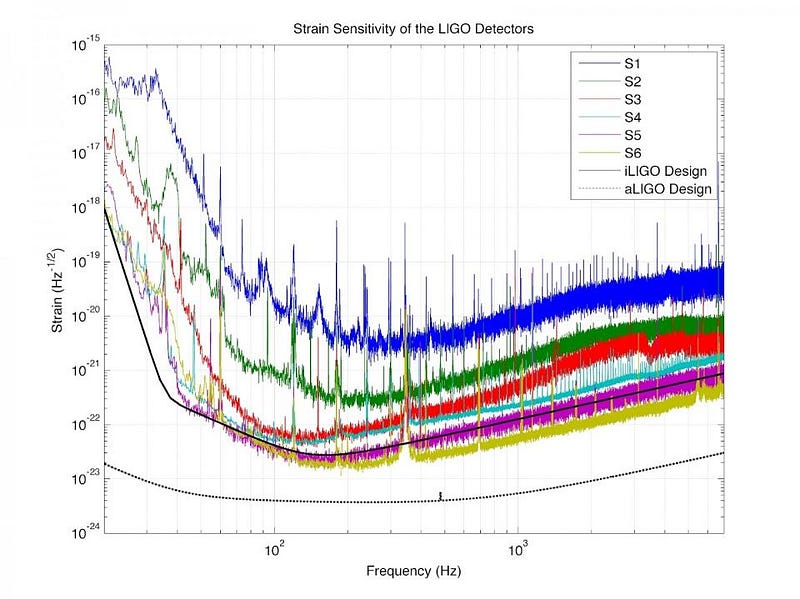
For one, gravitational radiation is incredibly subtle and weak in its effects. The Earth, as it orbits the Sun, loses energy due to this radiation and spirals inwards. But it will take 10¹⁵⁰ years for this process to occur, meanwhile our Universe is barely 10¹⁰ years old. If you take the densest, most concentrated massive objects in the Universe — black holes — and allow two of them to spiral into one another, the resulting gravitational wave will change the shape of planet Earth, momentarily, by less than the width of a proton. For generations, it seemed like detecting this effect would be forever beyond the limits of our technical capabilities. But thanks to decades of developments in the science of laser interferometry, noise isolation, cryogenic cooling, vacuum chambers, mirrors and more, the twin Laser Interferometer Gravitational-Wave Observatory (LIGO) detectors, last year, reached a sensitivity that could detect the largest of these events.
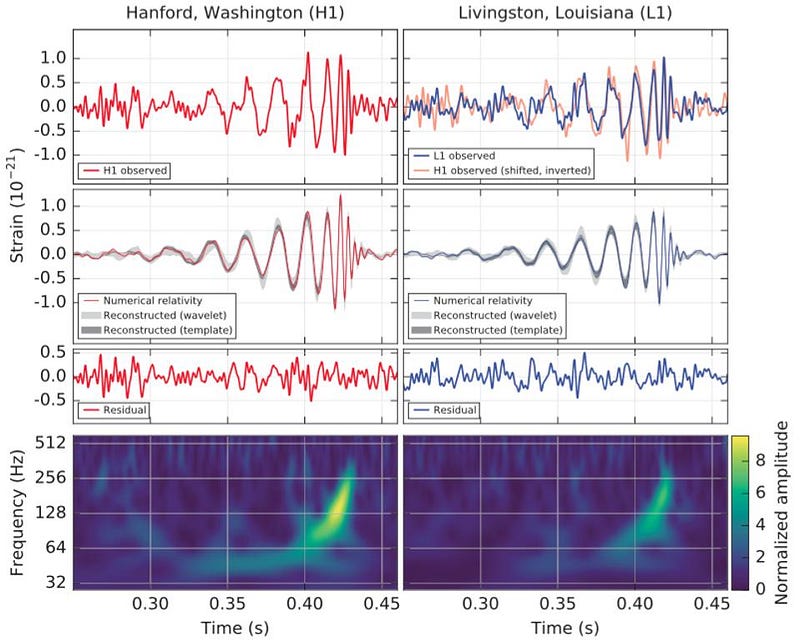
On September 14th, 2015, two black holes over a billion light years away spiraled in and merged together. The final orbits were a matter of milliseconds, yet during those last instants, 5% of the combined black hole mass — three Suns’ worth — were converted from matter into energy via E = mc². The gravitational radiation caused the twin perpendicular lasers here on Earth to change their path length by just 10^-19 meters, enough to be significantly detected and correlated. After months of analysis and checking, the results were incredibly significant and matched Einstein’s predictions exactly. We had done it. We had detected gravitational waves. A few months later, another merger signal, from two lower-mass black holes, was seen as well, confirming gravitational waves from merging black holes even further.
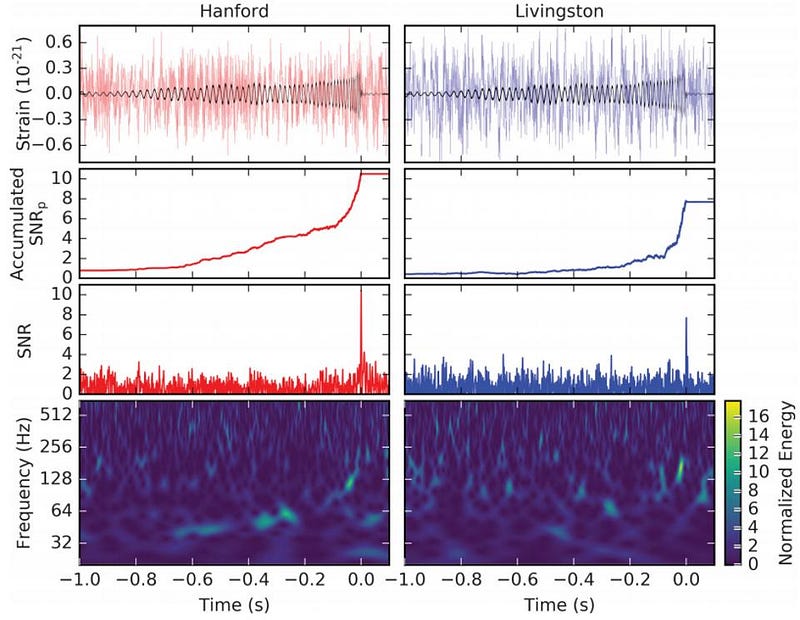
LIGO is back online and taking data right now at even greater sensitivity to 2015–2016. Among the things it hopes to see are:
- Increased statistics of the types of mergers already seen.
- Merging black holes of larger (up to 100) and smaller (down to 3 or 4) solar masses.
- Mismatched mergers, where two black holes of significantly different masses merge together.
- Neutron star mergers, where two collapsed objects left over from supernovae — but too small to form a black hole — spiral in and merge.
- Gravitational waves from “spike” events such as pulsar glitches, starquakes, and potentially even asymmetrical supernovae.
- And, hopefully, to correlate gravitational wave observations with electromagnetic ones, to find out which gravitational-wave producing events produce X-rays, Gamma rays, radio waves and light of any type!
All of this might come to be in just the next year or two. After a century of gravitational darkness, we’ve truly entered the era of gravitational wave astronomy.
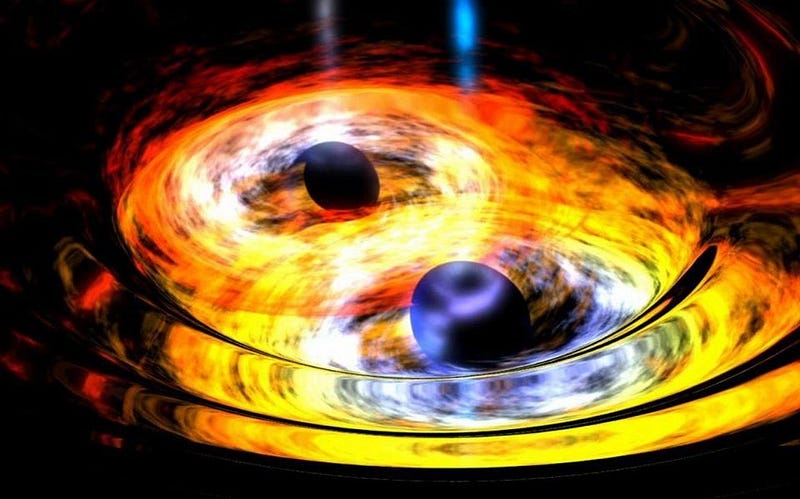
But this new scientific field isn’t just about the detectors we have today. As VIRGO, KAGRA and other gravitational wave detectors come online around the globe, we’ll be able to pinpoint exactly where these events occur. We can do follow-up observations across the light spectrum and gravitational wave spectrum simultaneously. We can choose to build gravitational wave detectors in space, allowing us to see the mergers of supermassive black holes. We can even see stable orbits around them, where the effects of General Relativity matter the most. We can put Einstein’s greatest theory to even stronger tests than we’ve ever subjected them to before. We can look for gravitational waves left over from the birth of the Universe.
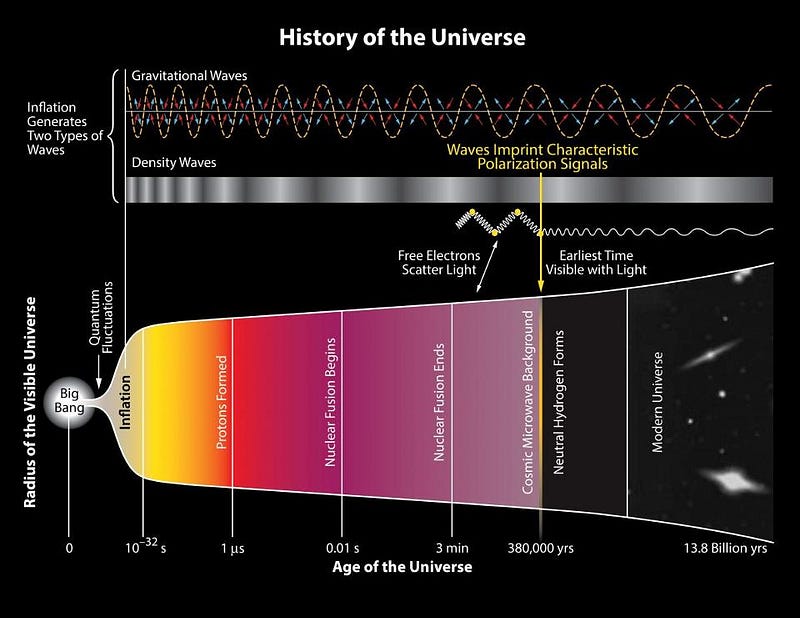
In short, we can learn about the Universe in an entirely new way. 2016 was a tremendous leap forward, and — after 40 years of technological development — brought us a brand new type of astronomy without a telescope: gravitational wave astronomy. What we do with it now is limited only by our imaginations, our investment, and the laws of nature themselves. Even in the absence of electromagnetic radiation, even without light, the future of astronomy is brighter than it’s ever been.
This post first appeared at Forbes, and is brought to you ad-free by our Patreon supporters. Comment on our forum, & buy our first book: Beyond The Galaxy!




